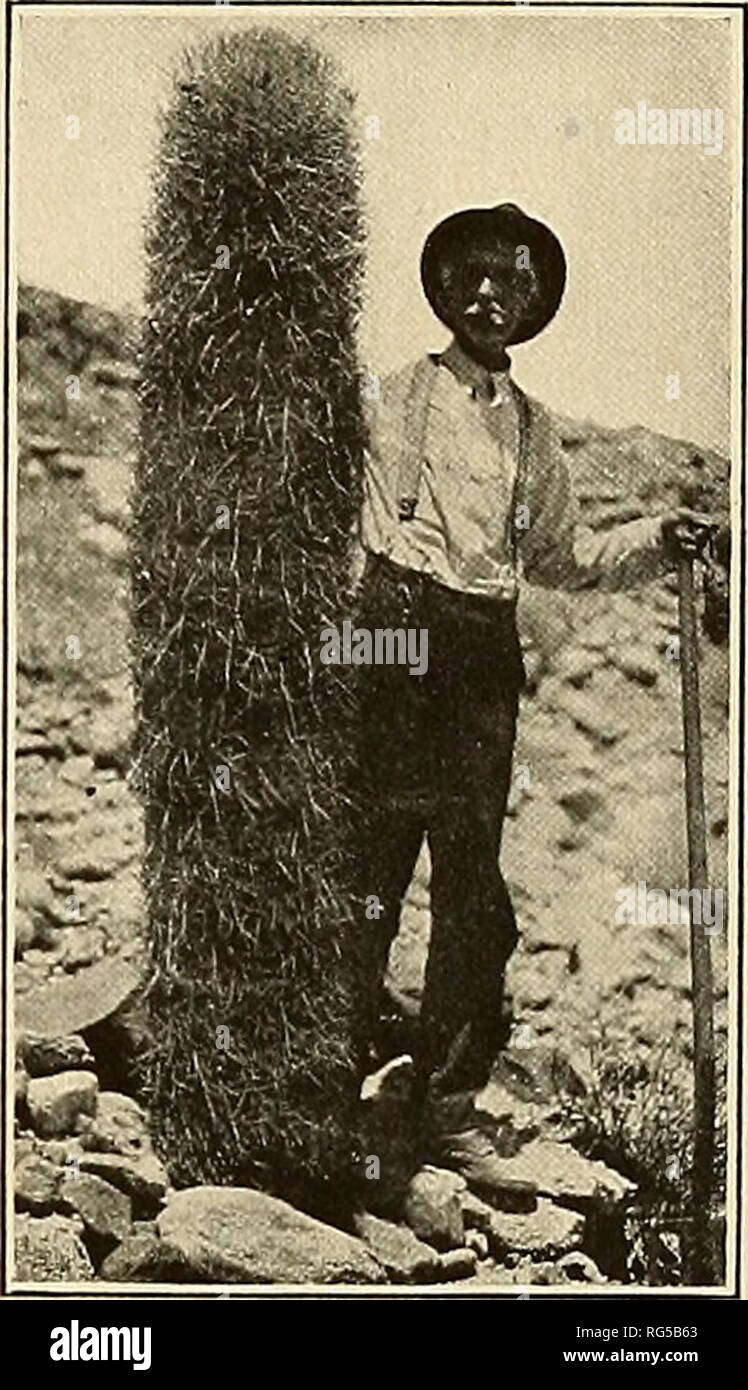. The Cactaceae : descriptions and illustrations of plants of the cactus family. ECHINOMASTUS. 147 According to Mr. E- C. Rost, for whom the plant is named, this species extends from the western fringe of the Imperial Valley, California, almost to Jacumba and down Lower California for about 40 miles. Mr. Rost's note on a plant sent to the New York Botanical Garden is as follows: "This cluster of yellow-spined plants shows in the main plant the appearance of being wrapped in straw. All of the mature plants of this variety have the same peculiarity. Note that the young off- shoots of this s

Image details
Contributor:
Book Worm / Alamy Stock PhotoImage ID:
RG5B63File size:
7.1 MB (388 KB Compressed download)Releases:
Model - no | Property - noDo I need a release?Dimensions:
1199 x 2083 px | 20.3 x 35.3 cm | 8 x 13.9 inches | 150dpiMore information:
This image is a public domain image, which means either that copyright has expired in the image or the copyright holder has waived their copyright. Alamy charges you a fee for access to the high resolution copy of the image.
This image could have imperfections as it’s either historical or reportage.
. The Cactaceae : descriptions and illustrations of plants of the cactus family. ECHINOMASTUS. 147 According to Mr. E- C. Rost, for whom the plant is named, this species extends from the western fringe of the Imperial Valley, California, almost to Jacumba and down Lower California for about 40 miles. Mr. Rost's note on a plant sent to the New York Botanical Garden is as follows: "This cluster of yellow-spined plants shows in the main plant the appearance of being wrapped in straw. All of the mature plants of this variety have the same peculiarity. Note that the young off- shoots of this specimen show a number of bright red spines, which disappear in the mature plants. One specimen I found to be 8 feet in height as shown in photograph. Some of the plants are single, but many are clustered." This is a very striking plant, perhaps nearest F. acan- thodes, but with a much more slender stem, and more appressed spines and these straw-colored. The type is based on a plant collected in Lower Cali- fornia, 40 miles south of the International Boundary Line (Rost, No. 327). Figure 1536 is from a photograph taken by E. C. Rost at the type locality in 1921. DESCRIBED SPECIES, PERHAPS OF THIS GENUS. EchinocacTUS haematacanthus Monville in Weber, Diet. Hort. Bois 466. 1896. Echinocactus electracanthus haematacanthus Salm-Dyck, Cact. Hort. Dyck. 1849. 150. 1850.. Fig. 1536.—Ferocactus rostii. Simple, sometimes perhaps proliferous, short-cylindric, 5 dm. high, 3 dm. in diameter; ribs 12 to 20, stout, light green; spines all straight, reddish with yellowish tips, the radials 6, the centrals 4, 3 to 6 cm. long; flowers funnelform, 6 cm. long, purple; scales of the ovary round, white-margined; fruit ovoid, 3 cm. long. Type locality: Not cited. Distribution: Between Puebla and Tehuacan, according to Weber. We do not know this species and our description is based on Weber's. His differs from the original where the central spine is described as solitary and reflexed. Schumann